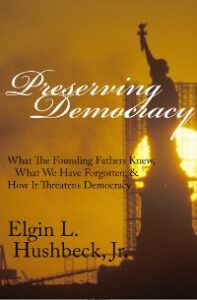Energion Roundtable Week 7 Jobs
This week’s Energion Roundtable question with Bob Cornwall, Arthur Sido, Allan R. Bevere, Joel Watts, and myself is:
What are the key policies that should be implemented in order to [create / facilitate the creation of / not impede the creation of] jobs? As always, feel free to compare your ideas to those of the candidates.
In my answer to week two’s question, I pointed out that of the three main issues in this election, “First and foremost has to be the economy” and the key aspect of the economy has to be jobs. This is also one of the biggest failures of the Obama administration. Obama promised that if we passed his stimulus, unemployment would not go above 8 percent. But it has not been below 8 percent since.
As with most of his problems, Obama blames this, not on any failure of his policies, but on Bush. There are a number of problems with this, not the least of which is that the recession ended in the June of 2009. A year later was hailed as “Recovery Summer”. Now as the summer of 2012 fades into memory, one has to ask just how many summers of recovery must we have before we can conclude that Obama’s policies are just not working? Even worse, it is becoming increasingly clear that the economy is slowing and problems are growing.
The real problem, as I detailed elsewhere, is that Obama’s analysis of the problem is just plain wrong. Since he does not understand the causes, it is no surprise that his fixes do not work. In fact, they are actually making things worse. If you get past the politics and look at this from an economic point of view, the current high unemployment is pretty easy to understand.
Economists know that there is a clear correlation between risk taking, innovation, growth and employment. For decades the United States has encouraged risk taking, which has funded innovation, spurred growth and thereby increased employment. As Edward Conard summarizes this in his book “Unintended Consequences,” for decades the US “poured more investment into innovation than the rest of the world” and as a result “productivity soared … while Europe and Japan stagnated.”
Our current high rates of unemployment are the result to too much investment money sitting on the sidelines. This is normal in a recession. As the economy slows, risk rises, and correspondingly investment drops. As confidence returns, so does investment so that businesses can expand and unemployment drop. What is different about this recession is that investment dollars continue to remain in safer less risky investments, and the big question is: if the recession ended in the spring of 2009, why is so much capital still on the sidelines?
The reason is quite simple: at virtually every turn the Obama administration has either increased risk or sought to reduce returns, and sometime both. While the government threw trillions at the economy, little if any actually funded any innovation that would have generated a high multiplier effect thereby spurring the economy. In fact studies show that for economies like ours, unemployment would have to exceed 12% before the multiplier effect of such spending would even reach 1x, and thus break even. In fact little that government does breaks even, much less comes close to the average return of 7.5% annual return of private investment; that is when investors are investing.
Critics will claim that encouraging investment only helps “the rich,” but that is simply false. Studies show that workers capture 70% of investment dollars. For example, my business has been struggling to develop and launch a new product for years. If I had an investor, I would use the money to immediately hire people. Multiply that by businesses across the county seeking to innovate or even expand. Some will fail and the investors will lose their money. Some will do ok, and others will grow to become household names, as Google, Apple, Microsoft, McDonald, Staples, Home Depot, and countless others did. In the process, they will be providing jobs directly and indirectly for millions.
Potential investors tend to be generally in one of two modes, either they are seeking to grow their wealth by taking risks with great benefits for the economy as a whole, or they are seeking to preserve their wealth as is typical during a recession. Rather than encouraging businesses and investors to take risks, the Obama administration has attacked them as the villains behind the recession (falsely I might add); threatened them with higher taxes (reducing both their ability to invest and reducing any potential return); passed huge pieces of legislation (ObamaCare and Dodd/Frank) with unclear implications (driving up both costs and risks); increased regulation (both increasing risks and driving up costs), and directly blocked businesses (permitorium, Keystone pipeline, Boeing. etc.).
In short, at virtually every turn Obama and the Democrats have taken almost the exact opposite action than that needed to grow the economy. In the process they have exploded the debt adding even more uncertainty and threatening fiscal collapse. Add to this the Feds’ QE1, QE2, and now QE3 which raises the specter of inflation. (Frankly, the Fed has printed so much money that I do not see how we can realistically avoid being hit by significant, and possibly even runaway, inflation at this point, regardless of who wins the election.) Finally add to this the uncertainty surrounding the coming fiscal cliff and it is no wonder investors are reluctant to invest.
What should be done? Actually it is pretty easy in principle. Stop attacking business; stop increasing the burden on businesses; seek to reduce uncertainty; and encourage growth oriented investment, the type of investment has been largely non-existence since the start of the recession, and which is needed if we are ever going to get out of it. Romney clearly understands this, while Obama’s policies demonstrate that he does not.

